
All iLive content is medically reviewed or fact checked to ensure as much factual accuracy as possible.
We have strict sourcing guidelines and only link to reputable media sites, academic research institutions and, whenever possible, medically peer reviewed studies. Note that the numbers in parentheses ([1], [2], etc.) are clickable links to these studies.
If you feel that any of our content is inaccurate, out-of-date, or otherwise questionable, please select it and press Ctrl + Enter.
Can a nursing mom have porridge?
Medical expert of the article
Last reviewed: 04.07.2025
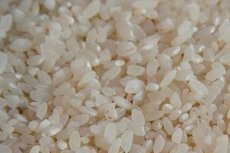
Can a nursing mother eat porridge when most other products can cause allergies in the baby? It would seem that the answer to this question is obvious, but in fact, not all porridges for mothers during lactation can be allowed. Therefore, before starting feeding, the mother should familiarize herself with the list of porridges that will be useful for her and the baby during the period of breastfeeding.
What cereals can be eaten during lactation?
To optimize the entire breastfeeding process, you need to take into account many factors, and the diet can be very wide. This also applies to the use of cereals in the diet of a young mother. If you choose to breastfeed, you obviously want to get the best supply of milk. You need to figure out which cereals and how they affect the production of breast milk, and which can be harmful and useful for mother and baby.
Can a nursing mother eat millet porridge? Millet porridge can be a very healthy product due to its rich composition. During lactation, it is considered one of the most useful types of cereals, which have many good effects on the body of the mother and child. Millet may not be the most common type of crop that you ate before pregnancy. But during the period when you begin to feed the baby, you should introduce this product into your diet.
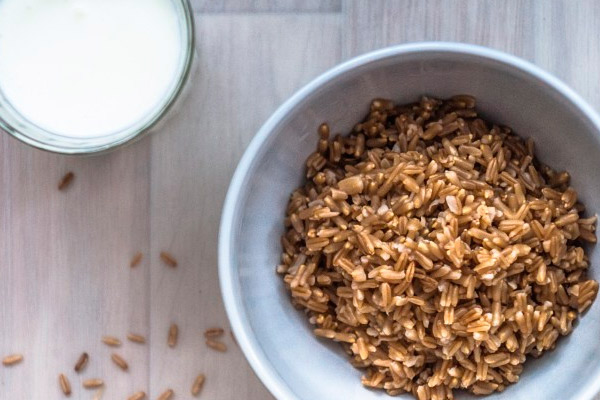
The top health benefits of millet porridge include the ability to protect the heart, prevent diabetes, improve the digestive system, reduce the risk of cancer, detoxify the body, improve respiratory health, boost the immune system, increase energy levels, and improve muscle and nerve health.
Millet is important because of its uniquely high nutrient content, including impressive levels of starch, vitamin B, calcium, iron, potassium, zinc, magnesium and fat. In addition, millet has significant levels of protein and dietary fiber, which further contributes to the health benefits of this important grain.
Millet porridge is one of the best grains to add to your diet if you want to protect your heart. It is a rich source of magnesium, which is an important mineral for lowering blood pressure, which can be a concern for women after pregnancy. Millet is also a great source of potassium, which further lowers blood pressure by acting as a vasodilator. Lowering blood pressure and optimizing your circulatory system is one of the best ways to protect your cardiovascular health. Additionally, the plant lignins found in millet can be converted by the microflora in our digestive system, and they protect against certain chronic diseases, such as cancer and heart disease.
Millet porridge can have a positive effect on digestion: due to its high fiber content, it eliminates problems such as constipation, excess gas, bloating, and colic. By regulating digestive processes, you also improve the retention of your nutrients and reduce the likelihood of more serious gastrointestinal diseases, such as stomach ulcers. Regular digestion and elimination of waste also helps optimize the health of the kidneys, liver, and immune system, as these organ systems are closely linked to the body's metabolic activity. This effect of millet porridge is not only on the mother's body, but also on the baby through milk, the effect of millet porridge eaten by the mother is also manifested.
Many of the antioxidants in millet can detoxify your body. Quercetin, curcumin, ellagic acid, and various other beneficial catechins can help rid your system of any agents and toxins by promoting proper excretion and neutralization, enzymatic activity in certain organs.
Overcooked foods like millet porridge can reduce the risk of non-insulin-dependent diabetes by absorbing sugar from the intestines and reducing the need to release large amounts of insulin. Given that glucose intolerance is common in mothers after pregnancy, it is important to prevent the development of diabetes in this way. The slow release of complex carbohydrates in millet porridge maintains energy levels, allowing you to maintain full concentration of food and reduces the feeling of hunger after feeding.
Millet porridge contains high amounts of vitamin B6, which promotes the release of the chemical serotonin. High levels of serotonin are associated with feelings of well-being, and also help with relaxation and restful sleep. When serotonin levels drop with limited sunlight, it can lead to depression. This sedative effect is also felt by the baby.
Can a nursing mother eat semolina porridge when, at first glance, it seems to be a completely safe porridge that even babies are fed. Adding semolina to your diet when breastfeeding your baby can be an excellent alternative to many food supplements. First of all, semolina porridge helps you achieve your daily iron intake. Each serving offers 1.8 milligrams of iron - which is 10 percent of the intake requirement for women and 23 percent for babies. Eating a diet rich in iron benefits your blood circulation because it prevents the development of anemia after childbirth in mothers and prevents early anemia in babies.
The gluten content of semolina makes it a good choice for bread and pasta, but if you have a gluten or wheat allergy, semolina may not be a good choice. If you have an allergy, you should not eat products made with semolina, as the baby may also have symptoms. If you have a wheat allergy, you should not consume anything made with semolina. So, if the mother does not have any hypersensitivity, semolina porridge may be a great option.
Can a nursing mother eat corn porridge, since corn itself is considered a difficult product to digest? Naturally, boiled corn is a complex product, but it contains many useful substances, so after corn is ground into flour, it can become an excellent product for making porridge.
One serving of cornmeal cooked in water contains 384 calories and 5.88 grams of fat, of which 1 gram is saturated fat. The rest of the fat is in the form of heart-healthy unsaturated fats. More impressive is the nearly 10 grams of protein in this portion of cornmeal. This amount is equivalent to 22 percent of the daily requirement that nursing mothers should have each day. Cornmeal does not contain cholesterol. Cornmeal contains 9.4 grams of fiber in each serving.
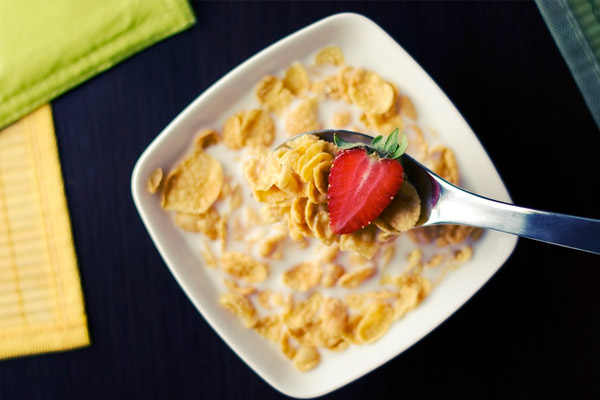
Cornmeal contains minerals that are very necessary for the body. And all varieties of corn, as well as corn flour, contain phosphorus, manganese, iron, copper, magnesium, and zinc. In addition, corn flour contains trace minerals such as selenium, which is not easy to find in normal foods.
Meanwhile, phosphorus is essential for the normal growth and health of bones, as well as optimal kidney function. Magnesium is essential for maintaining a normal heart rate, as well as increasing bone strength. That is why it is considered one of the wonderful benefits of corn porridge.
The benefits of corn porridge for moms with premature babies is the prevention of anemia. Why does corn porridge help prevent anemia? As you can see, anemia is often caused by vitamin deficiency. Meanwhile, corn porridge contains significant levels of iron, which is one of the important minerals needed to form new red blood cells. If you do not have iron, you may suffer from anemia, and if your baby is below the thirty-seventh week of gestation, then the risk of anemia is high. Therefore, eating corn porridge can prevent anemia due to the iron content. Two servings of corn porridge provide about 3 milligrams of iron. Iron is essential for healthy red blood cells and keeps the immune system healthy as well. The same serving provides 3.1 milligrams of zinc. Zinc allows your body to adapt after childbirth and the birth canal to heal faster. You'll also get about 2.5 milligrams of niacin, as well as potassium, phosphorus, and magnesium.
One of the benefits of corn porridge during lactation is that it provides a large amount of beta-carotene, which can help build up a reserve of vitamin A in your body and in your baby’s body. And it is also important to maintain good skin and vision. In addition to this, vitamin A is also very good for the skin as well as the mucous membranes. In addition, vitamin A obtained from beta-carotene can help boost the immune system. The amount of beta-carotene that is not converted into vitamin A in your body can act as a powerful antioxidant, like all carotenoids. This powerful antioxidant can fight terrible diseases such as heart disease and cancer.
Can a nursing mother eat rice porridge? The answer is clear – it is a very healthy and dietary product. Rice porridge is a whole grain product that can improve and strengthen the immune system, reduce asthma and reduce the risk of cholesterol, heart disease, diabetes and many other diseases with the help of vitamins and minerals that are present in it. The fatty acids that are present in rice are good for reducing bad cholesterol and they help increase the level of good cholesterol called HDL. This can help prevent high blood pressure in the mother after childbirth. High blood pressure can lead to many pregnancy complications and can be a concern after childbirth.
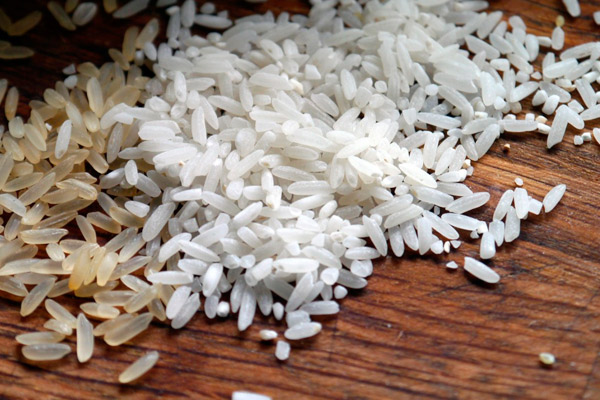
Rice porridge is good for mental health. Some studies have shown that rice can help reduce mood disorders, stages of depression and fatigue.
Due to hormonal changes and anxiety about parenthood, it is very easy for breastfeeding women to feel stressed or emotionally depressed. Rice porridge can help prevent sudden changes in routine and stress.
Rice porridge is also good for regulating digestion, because rice is also a high source of fiber. The fiber present in rice helps regulate bowel movements and maintains a fuller feeling.
Constipation is a common complaint during lactation due to hormonal changes in pregnant women's bodies, which slows down bowel movements. Therefore, rice cooked in a light form can regulate constipation.
Rice porridge is very good for your baby’s brain and nervous system. Rice is rich in vitamin B. This vitamin speeds up the metabolism in the brain. Rice is also very rich in magnesium. 150 g of rice contains 73.5 milligrams of magnesium. Magnesium helps in regulating nerves and muscle tone. It prevents sudden calcium release into nerve cells and nerve activation. It helps maintain relaxation of nerves and muscles.
Rice porridge is rich in minerals and nutrients such as magnesium, niacin, manganese, phosphorus, selenium and zinc, which all help in energy production and in controlling fatigue and many other health problems. Rice porridge is also useful in treating insomnia. After all, rice contains a sleep hormone called melatonin. It improves the quality of sleep by relaxing the nerves and increasing the sleep cycle. This is very important for nursing mothers, especially in the first month of the baby’s life, when the mother’s sleep patterns are disrupted due to night feedings.
Rice porridge strengthens the child's immune defense. Rice contains significant amounts of antioxidants such as zinc, selenium, which help boost the body's immune system. They nourish the body, speed up healing, and enhance its ability to fight infections such as colds and flu.
Therefore, rice porridge during lactation must be present in the diet at least once a week.
Can a nursing mother eat wheat porridge? Wheat is the most common grain available worldwide and has seen an increase in demand in recent years due to its abundant health benefits. Products such as bread, pasta, crackers, bagels, cakes, and muffins are just a few examples of wheat products, but consuming them may not be very beneficial for a nursing mother due to increased fermentation.
Wheat is considered one of the healthiest foods and provides a nutrient-rich diet. It significantly reduces the risk of heart disease due to its relatively low fat content. It also regulates blood glucose levels. The health benefits of wheat depend largely on the form in which you consume it.
While whole wheat is extremely nutritious, the benefits are diminished if you eat bleached white flour, which is made by processing after 60% of the grain has been extracted. So for a nursing mother, this product is a must in the diet, but the preference should be given not to flour products, but to wheat porridge.
Wheat porridge is a huge source of energy through all parts of the grain kernel, including the bran, germ, and endosperm. The nutrients in it are retained even after the porridge is cooked. Like whole wheat, wheat porridge is a rich source of nutrients. Wheat germ has an abundance of vitamins and minerals and is especially rich in vitamin E. Wheat germ is known to be a major source of vitamin B complex and includes vitamins such as thiamine, folate, vitamin B6, and minerals such as manganese, magnesium, and zinc.
Wheat porridge is rich in catalytic elements, mineral salts, calcium, magnesium, potassium, sulfur, chlorine, arsenic, silicon, manganese, zinc, iodide, copper, vitamin B and vitamin E. This wealth of nutrients is the reason why it is often used as a cultural base or nutritional basis. Therefore, wheat porridge can be consumed daily, simply by changing the garnish to it. Problems associated with anemia, mineral deficiencies, gallstones, breast cancer, chronic inflammation, obesity, asthenia, pregnancy and breastfeeding problems are quickly improved by consuming whole wheat.
Wheat porridge has a natural ability to control weight, but this ability is more pronounced in women. The betaine content of wheat is what helps in preventing chronic inflammation. Betaine is also found in beets and spinach. Consuming betaine affects a number of aspects of our body, which ensures a lower risk of chronic inflammation and other diseases such as osteoporosis.
Wheat porridge is the most popular and easily accessible bulk laxative, which can be relevant for women after childbirth, as well as for their babies. When you maintain a diet rich in fiber, you can be sure that problems such as flatulence, nausea, constipation and distension will be eliminated in no time.
Wheat bran increases the rate of estrogen metabolism, which can be important in the context of recent childbirth and hormonal imbalances. Wheat porridge is rich in vitamins: thiamine, riboflavin, and niacin, all of which are associated with metabolism. Another B vitamin, folate (folic acid), helps the body form red blood cells and is crucial for preventing birth defects in babies. Along with vitamins, wheat porridge is an excellent source of minerals that our bodies need to stay healthy. These include iron, which carries oxygen throughout the body and helps prevent anemia, as well as magnesium, which builds bones, and selenium, which protects against oxidation. With all these health benefits, wheat porridge is a must-have in the diet of a new mother.
It is not recommended to actively consume milk porridges during lactation. Mothers who eat porridge with cow's milk have a higher level of secretory IgA in breast milk. A cell culture study shows that breast milk with high sIgA blocks the absorption of undigested cow's milk protein by intestinal cells. Secretory IgA is a type of antibody that the baby's intestinal tract builds to form a barrier capable of neutralizing threats that descend through the intestines. The higher the sIgA, the less beta-lactoglobulin can pass through the cells, that is, the digestion of the structure of breast milk is impaired. This can cause colic in babies, since the mother ate porridge prepared with milk the day before. But you should not completely exclude all dairy products, and if you cannot eat porridge with milk, then you can eat kefir in moderation.
Can a nursing mother eat oatmeal while breastfeeding? The answer is clear - yes. Oatmeal is also one of the most popular foods that young mothers eat to make more breast milk and maintain lactation. Oats and oat products are a great addition to a healthy breastfeeding diet because they have many positive effects for nursing mothers.
Oatmeal contains an amazing array of nutrients such as beta-glucans, phytochemicals, protein, fiber, and carbohydrates. This will help promote better breast milk production.
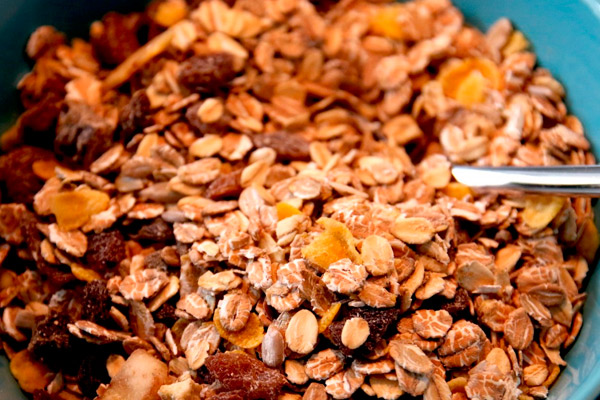
Oatmeal is a great source of iron. Moms with low iron levels often struggle with low milk supply, and oatmeal can help with that. Oatmeal has the added benefit of lowering cholesterol. All varieties of oatmeal are rich in phytochemicals known as polyphenols, which have strong antioxidant properties. Polyphenols flush out harmful free radicals from the body and prevent some potentially fatal heart diseases. They also reduce inflammation, boost immunity, and help fight viruses.
Oatmeal contains proteins, vitamins and minerals. They contain high amounts of iron, zinc, manganese and calcium. They are an excellent source of soluble fiber. In addition, they contain B vitamins to help increase energy, improve mood and fight exhaustion, anxiety, stress and depression.
Oatmeal contains saponins. Saponins are substances that may have a positive effect on hormones associated with breast milk production.
Oats contain plant estrogens. Products containing plant estrogens are associated with stimulation of the mammary glands and increased production of breast milk. Thus, oxytocin and relaxin are released, which stimulates the production of breast milk and helps with the flow of milk. Oxytocin is said to stimulate a feeling of trust, so you pass this on to your baby, who will thus be better nourished.
Beta-glucan is found in oats. Beta-glucan is a type of fiber that is thought to increase breastfeeding prolactin levels. Higher prolactin levels may have a positive effect on breast milk production.
Oatmeal during lactation provides various health benefits for the mother, and also has an excellent effect on milk production, so it can be included in the diet of nursing mothers.
Oatmeal porridge can also be used in the diet, because it is one of the varieties of oatmeal.
Barley porridge is one of the food groups that increases lactation. That is why it is so useful and necessary for mothers to eat it while breastfeeding. Barley porridge contains starch, dietary fiber such as beta-glucan, and the enzyme diastase. Barley porridge is a galactogen and is used by mothers in many cultures to increase milk supply. Barley porridge is considered a lactogenic food because it contains tryptophan. Tryptophan serves as a precursor to serotonin (our good neurotransmitter), and serotonin maintains lactation. It counteracts dopamine, which suppresses prolactin (necessary for milk production). So, anything that keeps dopamine levels low, in turn, keeps prolactin levels high; which makes them lactogenic and helps combat low milk supply.
Barley porridge also contains beta-glucan. Polysaccharides are natural forms of long-chain sugar that have a therapeutic or immunomodulatory effect on the body. Products containing polysaccharides, especially beta-glucan, can stimulate the secretion of prolactin and thus increase the level of prolactin in the blood.
Barley porridge has the highest fiber content of all whole grains, averaging about 17% fiber, with some varieties reaching up to 30%.
Fiber acts as a fuel source for the friendly bacteria in our colon. These bacteria help in fermenting the fiber content of barley porridge, thereby producing butyric acid, which is the main fuel for intestinal cells. It is very effective in maintaining a healthy colon. By keeping the intestines in proper condition, it helps in combating constipation.
The phosphorus and copper content in barley porridge ensures the overall health of your and your baby's bones, especially in the context of calcium deficiency due to pregnancy. Calcium is known to be one of the key components in protecting bone health. We need manganese for normal bone production, as well as in cases of iron deficiency anemia.
Being very nutritious, barley porridge is especially beneficial as it strengthens your immune system and reduces the chances of colds and flu. It improves blood volume and prevents anemia and fatigue, helps in the proper functioning of the kidneys and the development of body cells.
Barley porridge is a good source of selenium, which helps maintain the elasticity of the skin, thereby protecting it from free radical damage and weakening. In addition, it also improves the functioning of the heart, pancreas, and immune system.
Can you eat pearl barley porridge? Pearl barley porridge is almost identical in composition to barley porridge, but it is more processed and polished. Therefore, you can eat the porridge that you like best, and the benefits for lactation will be the same.
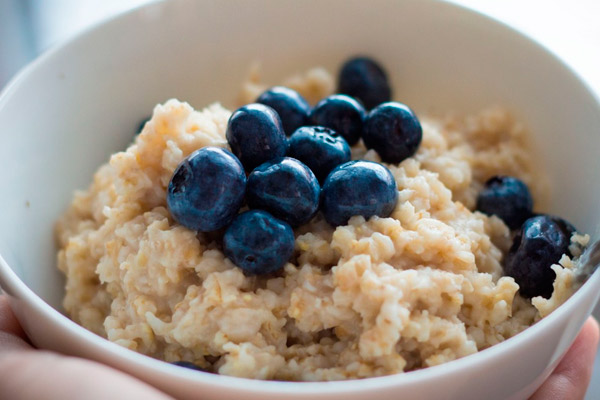
Can a nursing mother eat pumpkin porridge? Pumpkin porridge can be considered one of the healthiest vegetable products. Pumpkin porridge is rich in antioxidants such as zinc and vitamin C. These antioxidants can improve overall health. In addition, pumpkin is rich in folate, folates can help prevent birth defects in newborns. Finally, pumpkin is rich in vitamins such as vitamin E, niacin, biotin, B1, B2 and minerals such as calcium, potassium, selenium and manganese, which are beneficial for mothers and their babies.
Pumpkin porridge is generally good for breastfeeding women as it is very nutritious. In addition, pumpkin is also rich in fiber, which can help prevent constipation in the baby as well. However, since pumpkin improves blood circulation, it can increase unwanted lochia. Therefore, excessive consumption should be avoided.
Pumpkin is rich in beta-carotene, vitamin C and fiber.
Can a nursing mother eat pea porridge? Yes, it is completely safe for a nursing mother to eat pea porridge and other legumes that stimulate gas production, such as broccoli, cabbage, and Brussels sprouts. Although many believe that these products can cause gas in a breastfed baby, but everyone is individual.
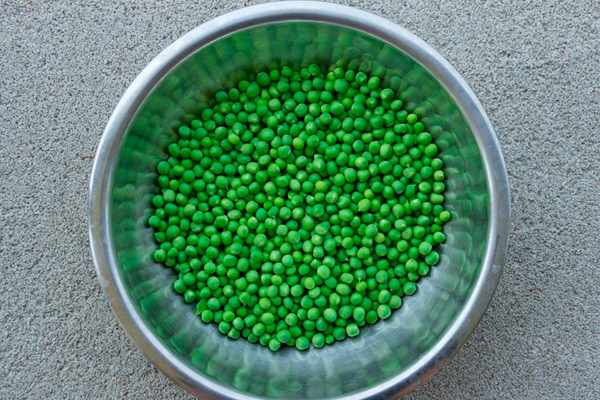
If your baby seems really fussy, there's no harm in eliminating a food from your diet, like pea porridge, to see if it's making a difference in the development of colic. To do this, pick one food to eliminate for a week and check your baby's symptoms. But it's more likely that your baby's tummy troubles will resolve on their own, so you can eat whatever nutritious foods you like. And pea porridge is a very healthy vegetable dish that has lots of B vitamins.
Can a nursing mother eat buckwheat? Buckwheat is one of the healthiest and most nutritious cereals you can eat while breastfeeding. Buckwheat contains the following essential nutrients needed for your growing baby: vitamins A, B1, B2, C, niacin, folate, potassium, phosphorus, magnesium. It also contains trace minerals: selenium, iron, zinc, manganese. Buckwheat has more protein than any other form of cereal. Buckwheat grains contain approximately 11-14 grams of protein for every 100 grams of whole grains. The main advantage of buckwheat over other cereals is that it has a unique protein composition. These include cholesterol-lowering effects and improved digestion by reducing constipation. Rutin, a phytonutrient in buckwheat, is an important antioxidant for cardiovascular health. This phytonutrient supports the circulatory system and helps combat blood pressure and high cholesterol. Rutin’s potential health benefits extend beyond its vascular benefits. Rutin-rich foods, such as buckwheat, have also been credited with combating inflammatory conditions.

Buckwheat porridge is considered a hypoallergenic food, which means that it is also low in other allergy-causing proteins and is therefore unlikely to cause allergic reactions in most babies, which is what lactating mothers fear. Buckwheat can also help alleviate existing allergic reactions. Buckwheat grain extract has a strong anti-allergic effect.
Can a nursing mother eat flaxseed porridge? This is rightfully considered one of the healthiest cereals, provided that the nursing mother likes its taste. But, even despite the not very pleasant taste of this porridge, its benefits are great. Flaxseed porridge is full of vitamins and useful elements. It is an excellent source of dietary fiber, minerals such as magnesium, potassium and zinc, proteins and vitamins B6 and E. Flax seeds are a source of omega-3 fatty acids and plant-based lignans.
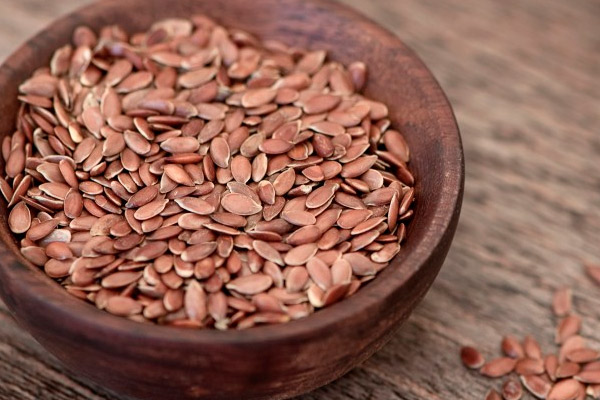
Flaxseed porridge contains two essential fatty acids - linoleic acid and omega-3 fatty acids, which play an important role in the early development of the baby's brain. Regular consumption of flaxseed porridge in moderate amounts, along with plenty of water, can ease bowel movements and also prevent constipation. However, it can also be a cause of constipation if taken in excess and without sufficient fluids.
It is safe to eat flaxseed porridge in moderation while breastfeeding, as large amounts can act like estrogens in the body, causing hormonal imbalances.
A nursing mother should definitely eat different types of cereals, as this is the main source of dietary fiber and some vitamins. But before deciding which cereal you will eat, you need to decide how useful it will be for your child. In general, it should be said that any cereal can be eaten if your baby reacts well to it.

